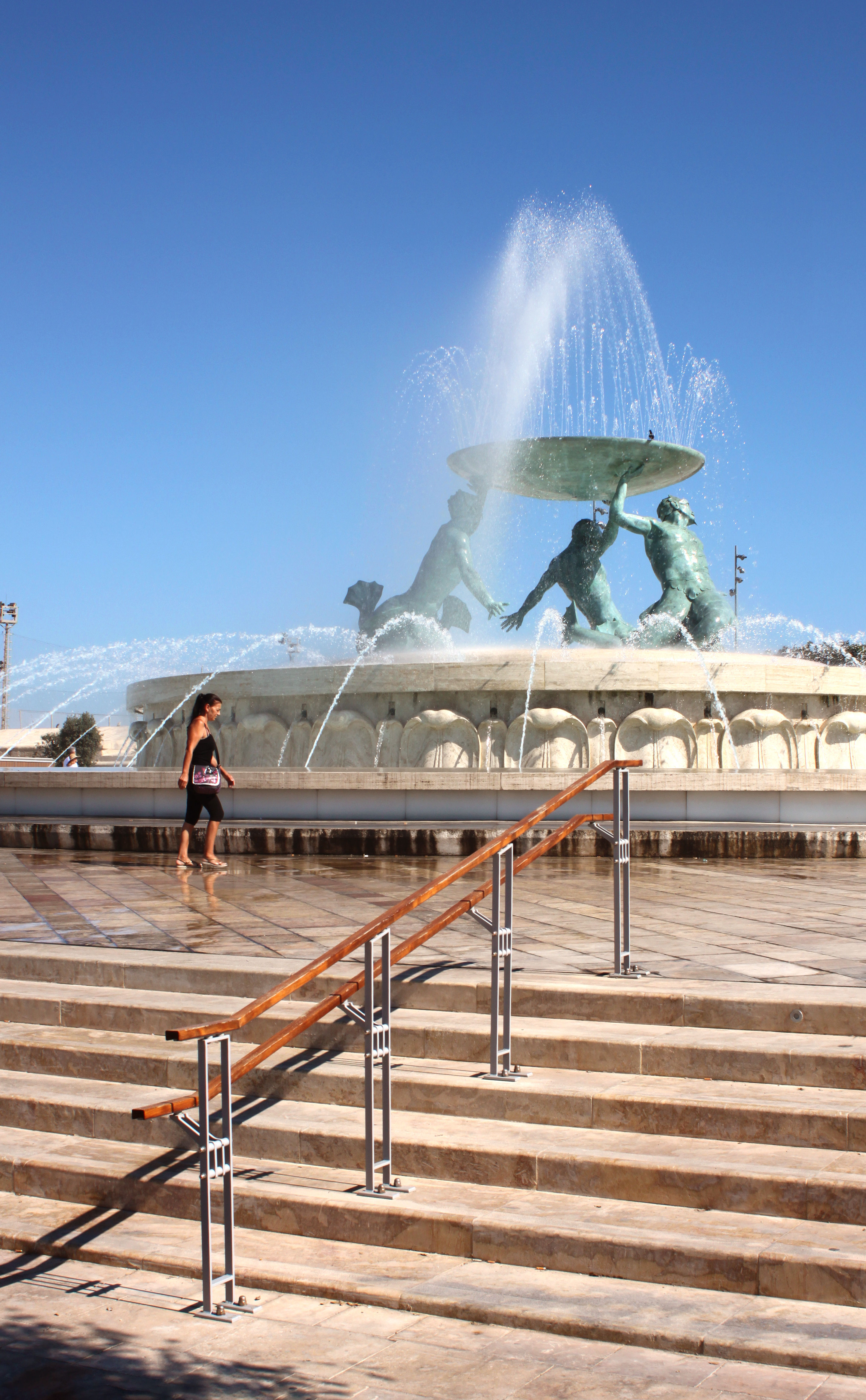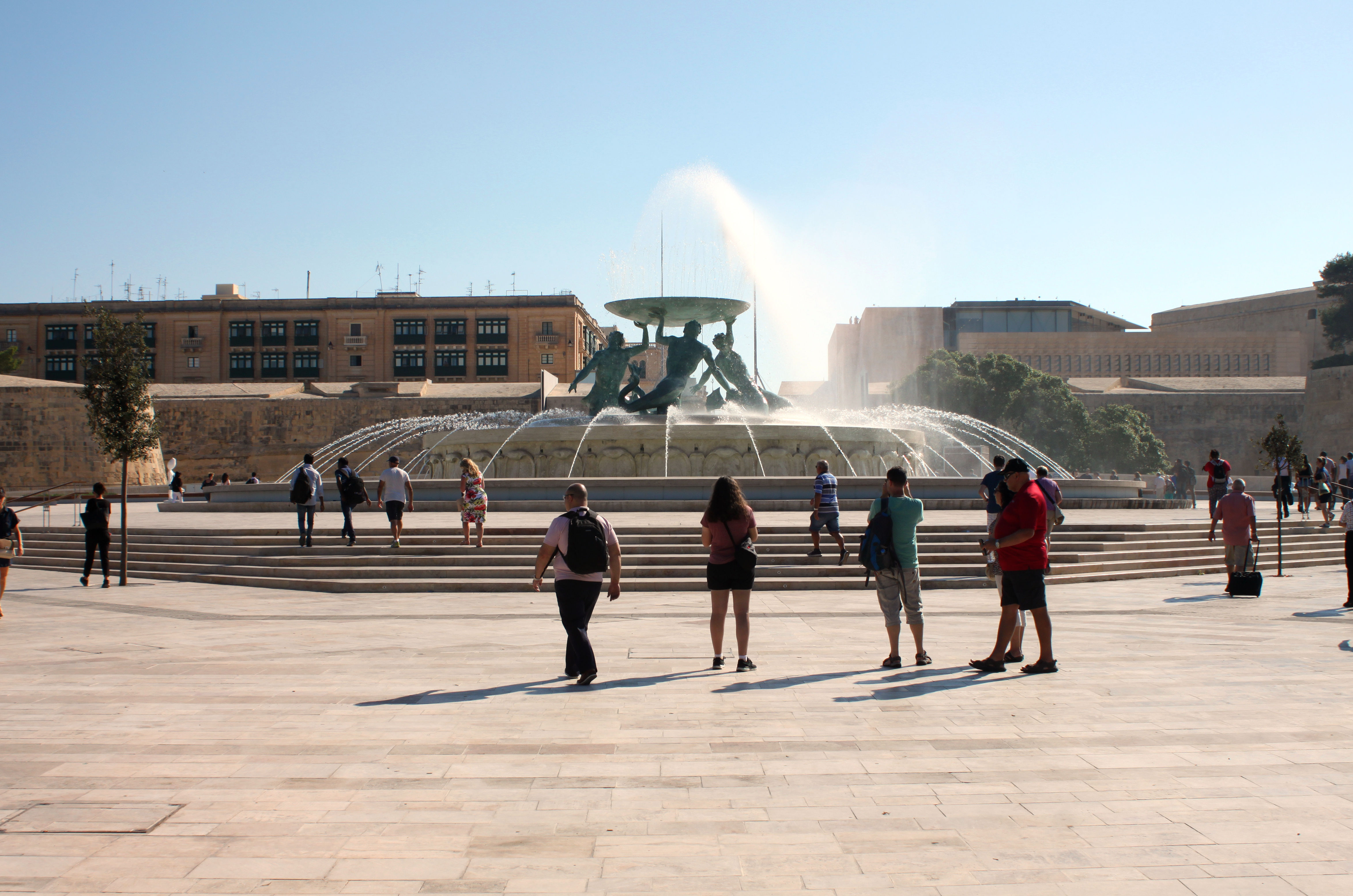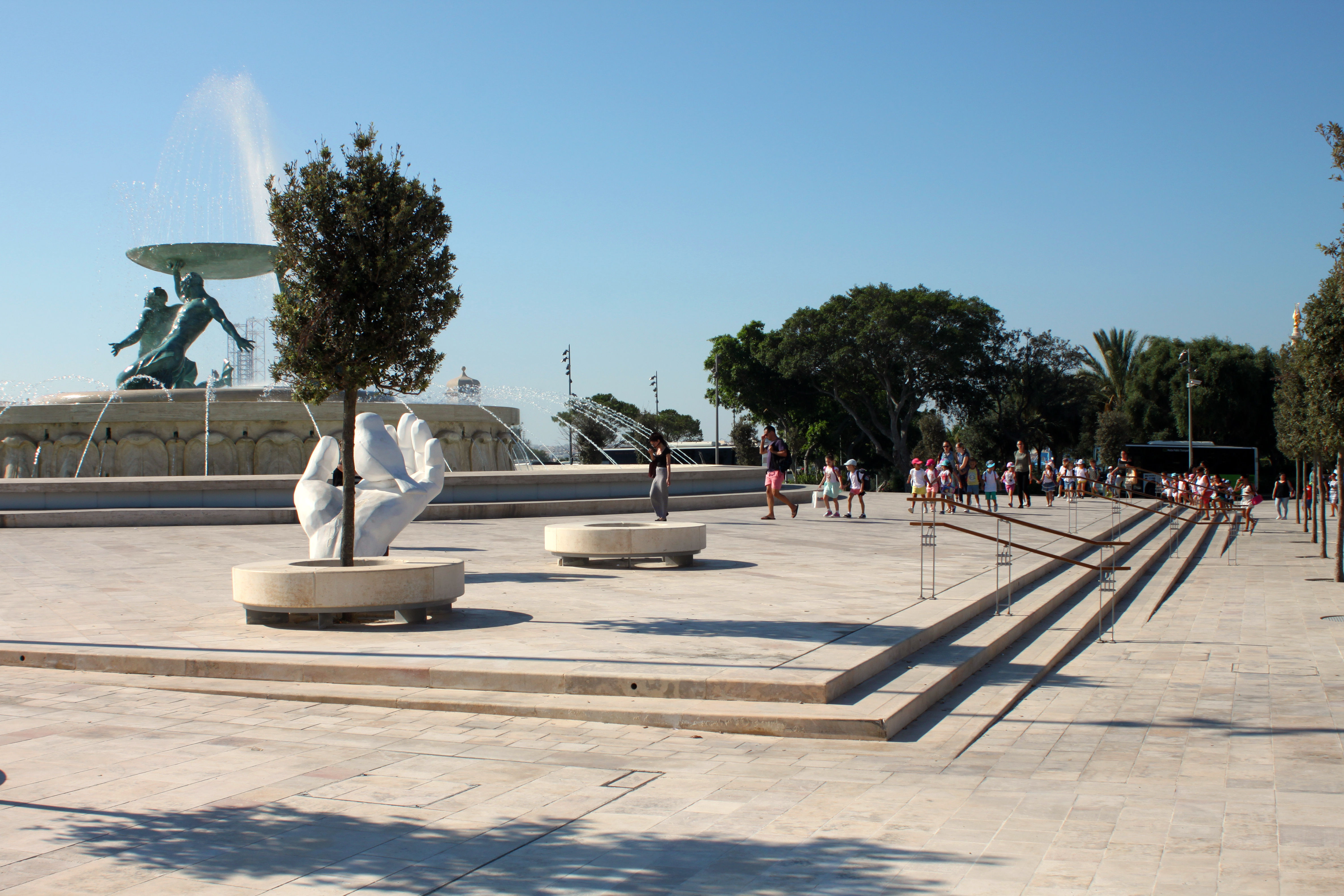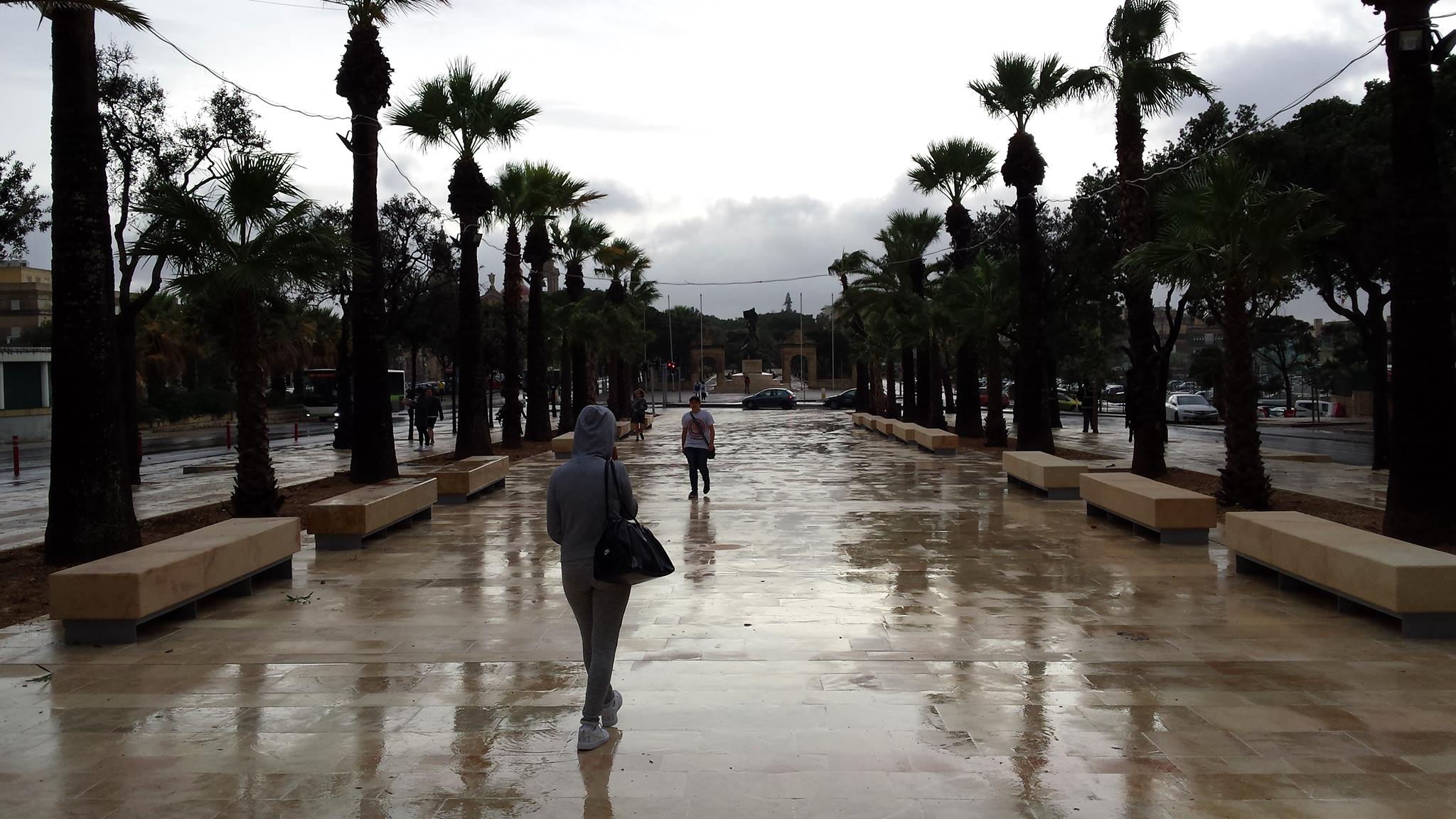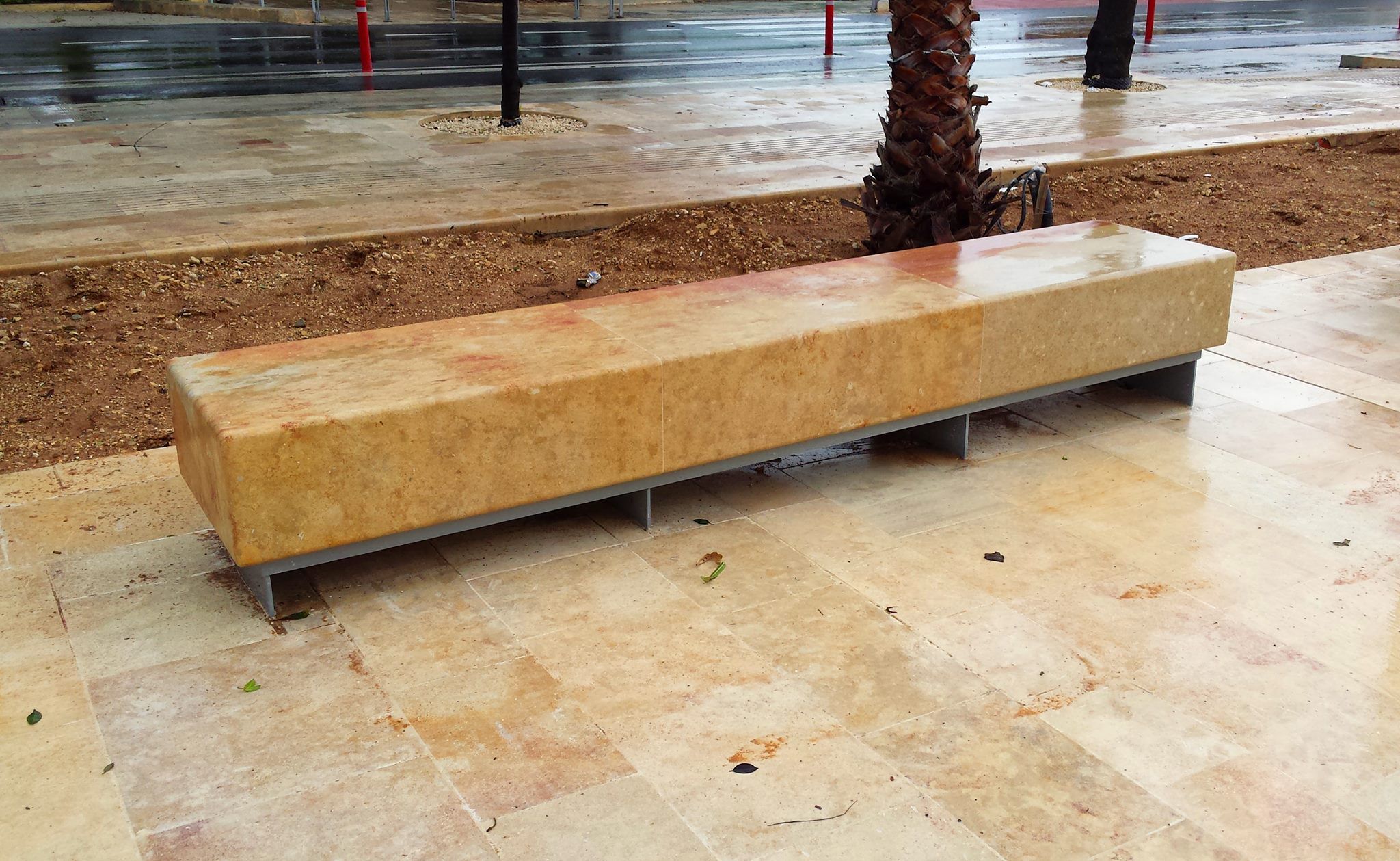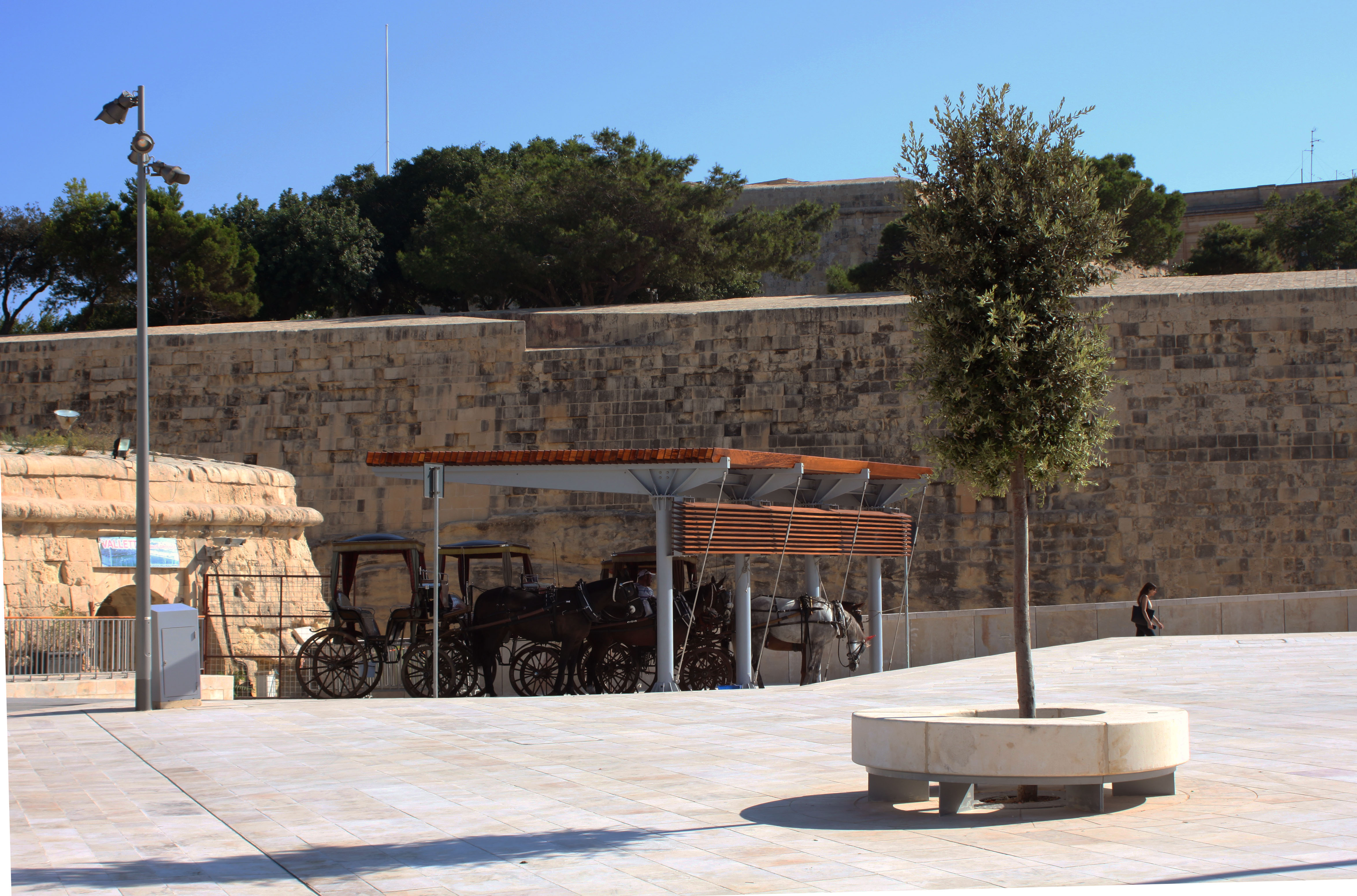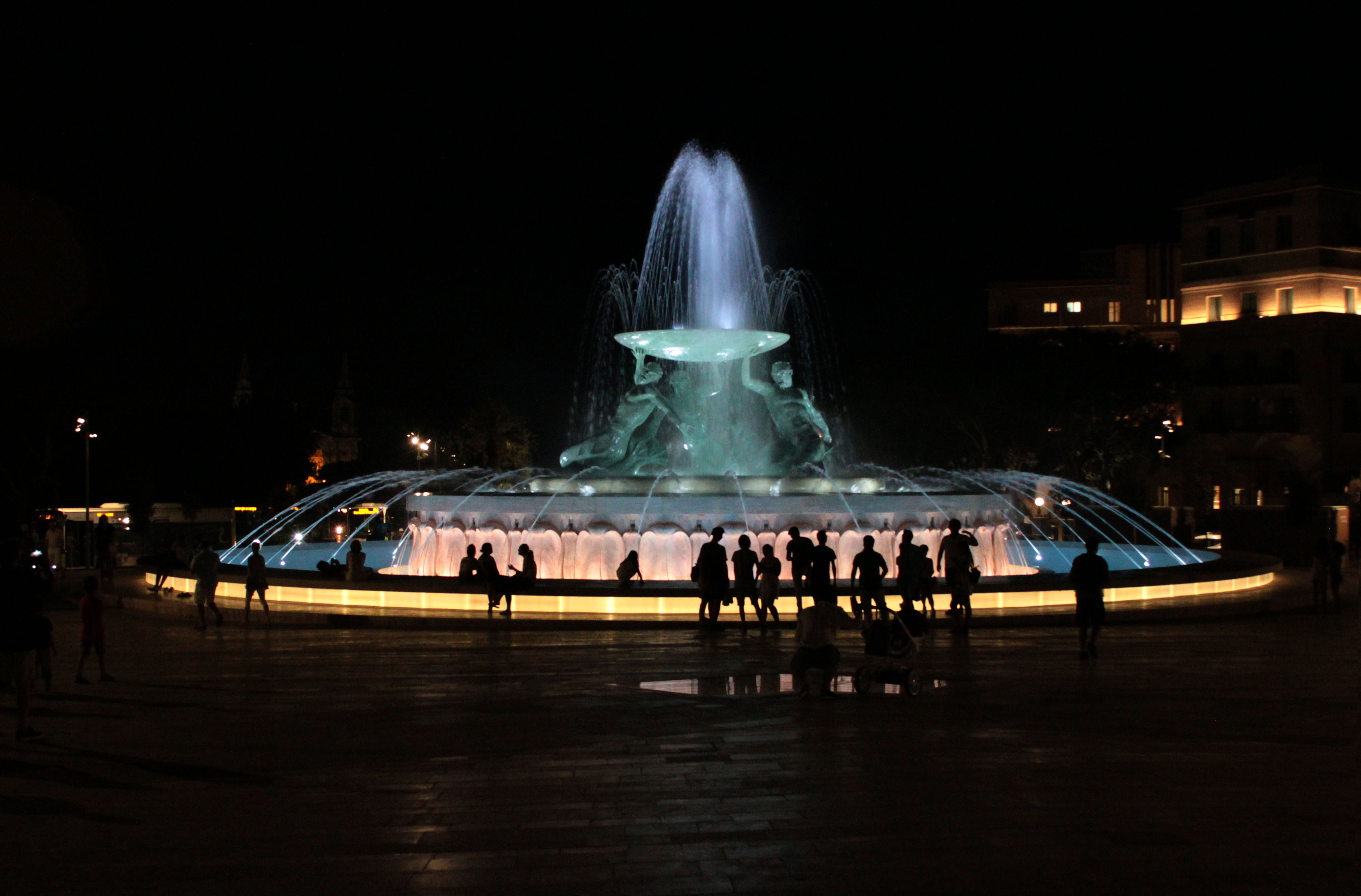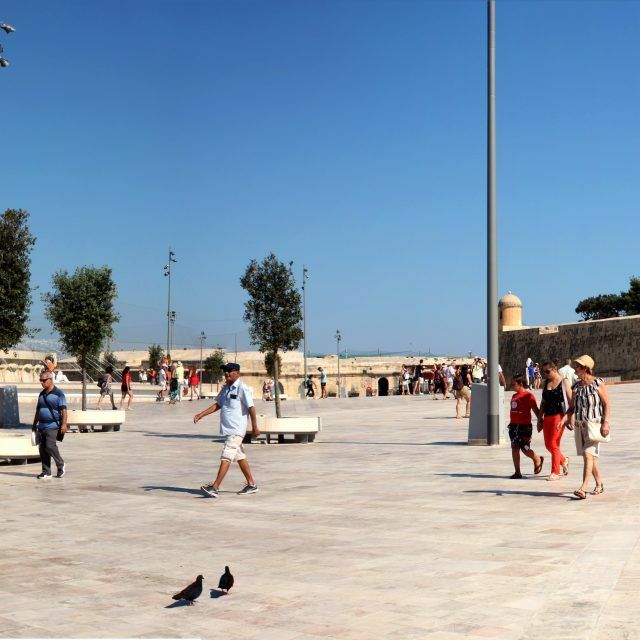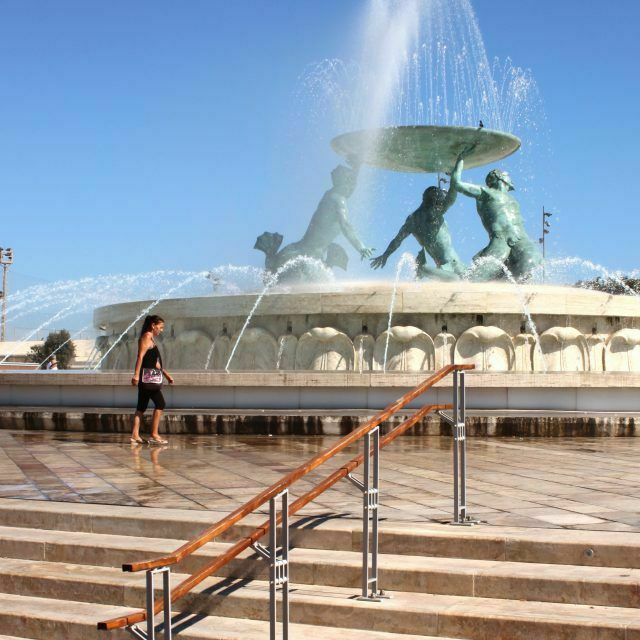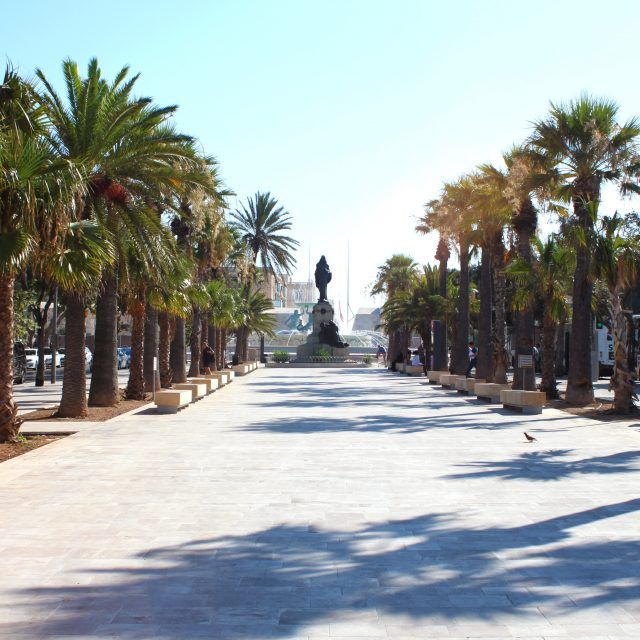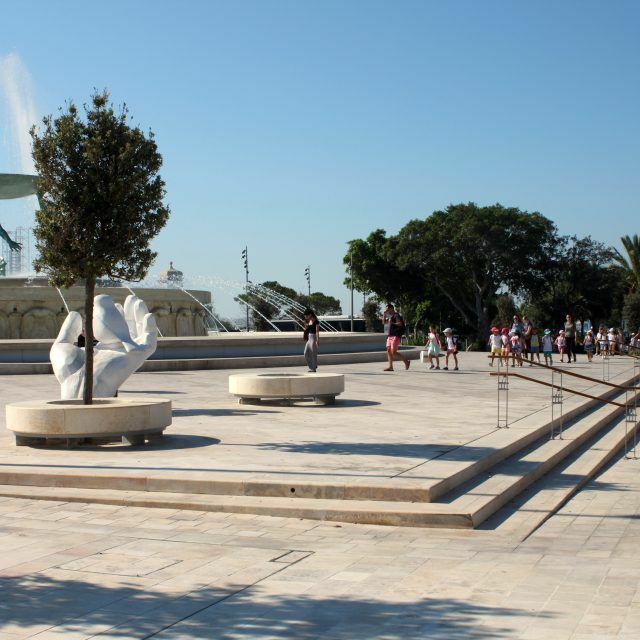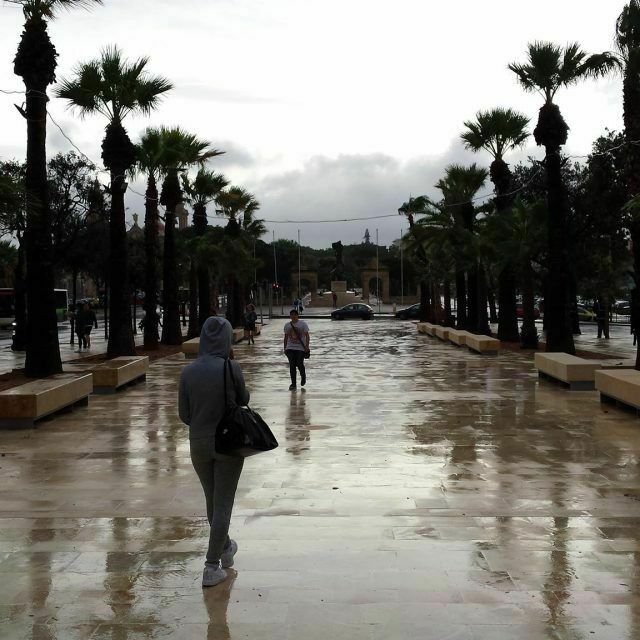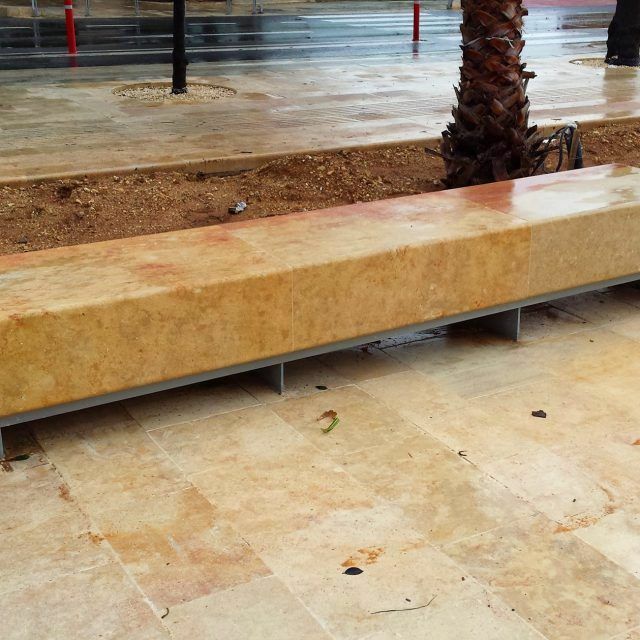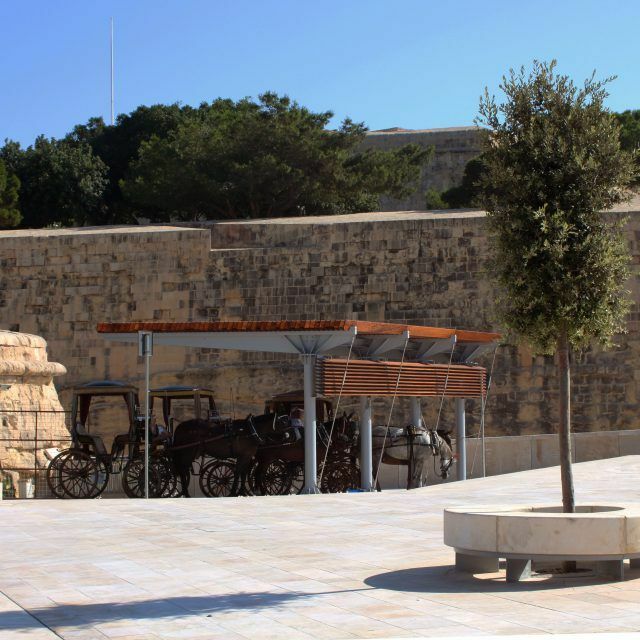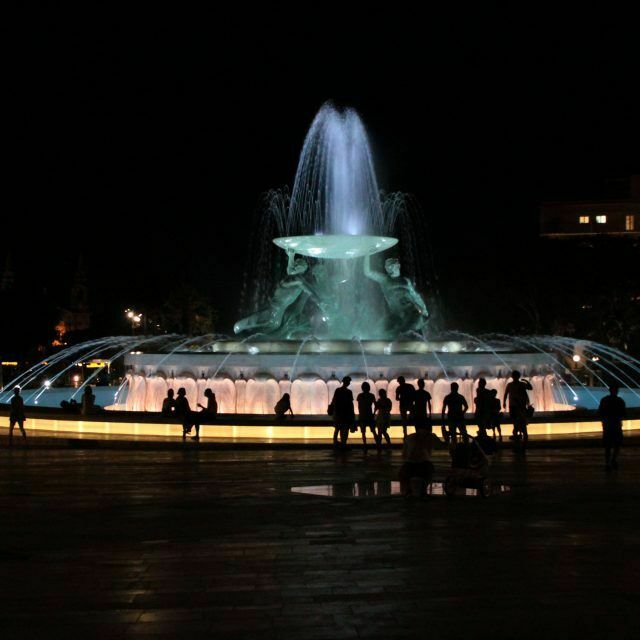Urban Regeneration Award
- Winner
- Periti at GHRC & MTIP
- Project
- Triton Fountain
The embellishment and upgrading of Triton Square and the restoration of the Triton Fountain were intended to satisfy the following objectives, namely:
- converting the square into a free urban central meeting point for social, cultural and entertainment activities and events,
- restoring the Triton Fountain to its original appearance and function as the focal point of the square,
- reviving the historical backdrop of the square, in particular the bastions and ditch, while preserving the archaeological findings,
- rendering the square as a pedestrian area accessible for all from the Biskuttin to City Gate,
- facilitating the operational requirements in and around the square for buses, taxis, cabs and other service providers in an organised and safe way.
The proposed layout was influenced by the existing axis and historical structures present in the area. The approximate main axis links Biskuttin Garden, Kristu Re Monument, Triton Fountain and City Gate entrance.
Holm Oak trees are a vital element within the design as they provide a covered walkway where a comfortable climate is maintained throughout the year. Large hardstone stairs, which envelop Triton Fountain, are framed by the adjacent tree lines. Twenty underground reservoirs, purposely built to harvest rain water, provide a sustainable supply of water for irrigation purposes.
The paving material used for this project is mainly local hardstone and the design of the paving blocks reflects the underground forms of the former St. Magdalene’s Ravelin and outworks. The paving, lighting and street furniture are all designed to frame City Gate and its imposing fortifications.
The Triton Fountain restoration was achieved after detailed research on how the fountain appeared in its early years, where the historic fabric of the Triton Fountain was identified and conserved through a faithful restoration of the visible elements of this monument.
The restoration of the sculptural group included the consolidation of the triton figures, the repair of the badly-warped basin, and the installation of a structural reinforcement within the tritons to withstand the weight of the upper basin and allow the removal of the central supporting sculpted feature added in 1986. The sculptural
group was given its original patina hue. The restoration of the travertine included cleaning by specialised techniques, plastic repair, and consolidation of loose parts.
The most visible and pleasing aspect of the fountain are the water features, which give dimensional balance to the structure and add life to an otherwise static monument. The project reproduced the original display of the three water jets and the works included a water treatment system to render the water safe for the people close to the fountain, without adversely affecting the travertine and the bronzes. Another visible feature that required re-designing and modernisation was the architectural lighting of the fountain.
The whole operation of the fountain is controlled by an underground plant room that connects to the fountain through a new underground tunnel.
The scope of the project was successfully achieved as demonstrated by the events organised and the positive comments from the public and stakeholders.



